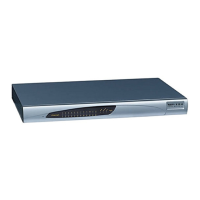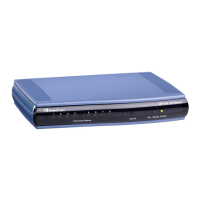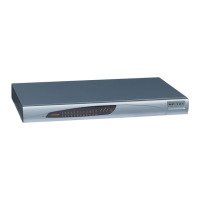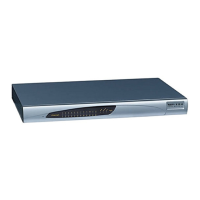[\PhoneContext]
This parameter can include up to 20 indices.
Notes:
For a description of the table's parameters, refer to the
individual parameter descriptions below.
Several entries with the same NPI-TON or Phone-
Context are allowed. In this scenario, a Tel-to-IP call
uses the first match.
Phone-Context '+' is unique in that it doesn't appear in
the Request-URI as a Phone-Context parameter.
Instead, it's added as a prefix to the phone number. The
'+' isn't removed from the phone number in the IP-to-Tel
direction.
To configure the Phone Context table using the Web
interface, refer to ''Mapping NPI/TON to Phone-Context''
128
on page .
For a description on using ini file table parameters, refer
to ''Format of ini File Table Parameters'' 191 on page .
Web/EMS: Add Hunt Group ID as
Prefix
Determines whether the device's
[AddTrunkGroupAsPrefix]
Hunt
Group ID is added
as a prefix to the destination phone number (i.e., called
number) for Tel-to-IP calls.
[0] No = Don't add Hunt
Group ID as prefix (default).
[1] Yes = Add Hunt Group ID as prefix to called
number.
This option can be used to define various routing rules.
Notes:
To use this feature, you must configure the Hunt Group
IDs (refer to Configuring the Endpoint Phone Numbers
149
on page ).
Web: Add Trunk ID as Prefix
EMS: Add Port ID As Prefix
Determines whether the
[AddPortAsPrefix]
port number is
added as a prefix
to the called number for Tel-to-IP calls.
[0] No = port number/
not added as prefix (default).
[1] Yes = port number/
If enabled, the
added as prefix.
port number (single digit in the range 1 to 8
for 8-port devices, two digits in the range 01 to 24 for MP-
124) is
Add Trunk Group ID as Prefix to
Source
added as a prefix to the called (destination) phone
number.
This option can be used to define various routing rules.
Determines whether the device adds the
[AddTrunkGroupAsPrefixToSource]
Hunt
Group ID
(from where the call originated) as the prefix to the calling
number (i.e. source number).
[0]
No (default)
[1]
Yes

